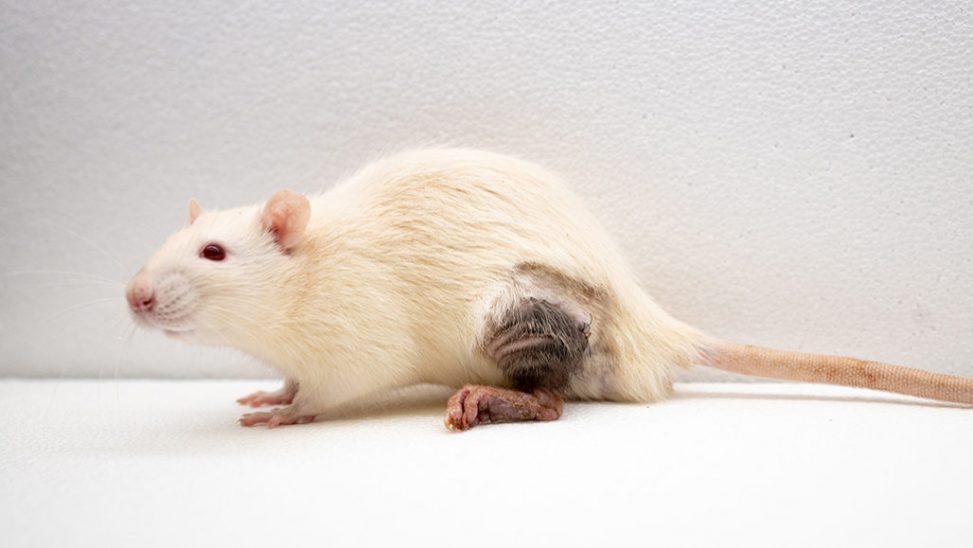Research scientists are constantly faced with mystifying problems that require them to think outside the box and across disciplines. James Fisher and his colleagues did just that.
In an article published on March 13, researchers harnessed a trick that cancer cells use to hide from our immune system to effectively transplant a tissue from a brown rat to a white rat without needing immunosuppressive drugs.
Normally, transplants that involve tissues including skin, bone, nerves, and blood vessels transplanted from one patient to the other, require the patient receiving the transplant to take immunosuppressive drugs. These drugs suppress the receiver’s immune system so that their body does not identify the new transplant as foreign and reject it. Patients who receive donor organs or tissues typically continue to take medication that weakens their immune response for the rest of their lives. Without these drugs, the immune system would attack and reject the donor tissue, unless it is a perfect genetic match, causing the transplant to fail. However, taking immunosuppressive drugs for the long-term can put patients at a higher risk for infectious disease (such as COVID-19) or cancer. Therefore, researchers have been investigating ways to keep the immune response unharmed whilst also allowing for the new tissue to successfully be taken up by patients.
Researchers at the University of Pittsburgh used knowledge gained from cancer research in their approach to developing a novel method for tissue transplants. Certain cancerous tumors recruit immune cells, called T regulatory cells, to their environment by releasing a specific chemical named CCL22. This chemical signals through the body and recruits T regulatory cells to their location. T regulatory cells play a role in suppressing the immune system and so recruitment of these immune cells allows tumors to avoid destruction by the host’s immune system. Therefore, the researchers made the connection that the release of CCL22 by new donor tissue would allow the regulatory T cells to mark the new tissue as ‘self’ and protect it from destruction by the receiver’s immune system. To safely mimic this evasion strategy, Fisher and his colleagues developed a biodegradable, synthetic microparticle system that is filled with the chemical CCL22 and then slowly releases it in the body. In this study, half of the rats receiving limb transplants were injected with the microparticles and the other half were treated with only a baseline standard immunosuppression protocol. Treatment with 50 mg of the CCL22-releasing microparticles significantly prolonged survival of the transplanted tissue indefinitely, with long-term survival over 200 days in six of eight animals (75%). This data is exciting when compared to the untreated animals who consistently rejected transplants 2 to 3 weeks after their immunosuppression drugs were stopped.
Treatment with 50 mg of the CCL22-releasing microparticles significantly prolonged survival of the transplanted tissue indefinitely, with long-term survival over 200 days
As unappealing as the below picture may look, it is important to share because it shows the stark difference between the healthy new limb (rats that received this novel treatment) versus a dying tissue that was attacked by the white rat’s immune system.

Left: The transplanted leg is healthy and useful after 200 days in rats with microparticle treatment Right: Rats with standard treatment rejected the transplanted leg after the arrest of immunosuppressive drugs.
By injecting the rats with the microparticles that recruit immune system suppressing T regulatory cells, this novel therapeutic approach has the potential to prevent transplant rejection. Additionally, this approach would help to avoid patient compliance and toxicity issues that are often associated with current long-term immunosuppression regimens, which also leave patients immunocompromised and unable to fight infections and malignancies. As we are all well aware with the current pandemic, our immune system is our best defense against viruses, bacteria and other diseases, so a treatment option that keeps the immune system intact would make a sweepingly positive impact.
NB: As important as it is to keep educated and updated on the ever-changing COVID-19 pandemic, I also think that it is just as essential to shift our focus to other areas of science. Sharing exciting new discoveries in cancer research can hopefully provide a relief to the constant COVID-19 news and a sense of positivity for the future.
For more information: James D. Fisher, Wensheng Zhang, Stephen C. Balmert, Ali M. Aral, Abhinav P. Acharya, Yalcin Kulahci, Jingjing Li, Heth R. Turnquist, Angus W. Thomson, Mario G. Solari, Vijay S. Gorantla, and Steven R. Little. 2020. In situ recruitment of regulatory T cells promotes donor-specific tolerance in vascularized composite allotransplantation. Science Advances. doi: Eaax8429

Sherzilla
I agree with your idea that we need to shift our focus to other areas so that the discoveries can provide us relief at a time like this!
I really liked the addition of the image, it really shows what a difference this treatment can make.
murphymv
I agree, adding the photo helped solidify the main finding.
murphymv
This is a fascinating finding. I hope this innovative approach to improving transplants can be applicable to humans soon. I have to admit–this has me thinking about centaurs and other mythical beings made of multiple creatures.